FormicidaeAnts Camponotus aurocinctus Camponotus consobrinus (Banded Sugar Ant) Camponotus inflatus (Honey Ant) Dolichoderus doriae (Dolly Ant) Leptomyrmex erythrocephalus (Red-headed Spider Ant) Myrmecia brevinoda (Nocturnal Bull Ant) Myrmecia nigrocincta (Jumping Jack Ant) Myrmecia pilosula (Jack Jumper Ant) Myrmecia pyriformis (Inch Ant) Myrmecia rubripes (Bullant) Notoncus spinisquamis Oecophylla smaragdina (Green Tree Ant) Rhytidoponera aspera Rhytidoponera metallica (Green-head Ant)
Ants are a group of insect belonging to the family Formicidae, and are one of the most successful and ecologically important groups of terrestrial insects. They have colonised almost every landmass on Earth, except for the polar regions, the highest mountaintops, and some remote inhospitable islands.
In Australia, you will find a variety of ant species throughout the wide variety of habitats, from coastal to bush, rivers, lakes and wetlands, rainforests, woodlands, shrublands, heathlands, savannas, grasslands, to arid desert regions, there are certainly thousands of different ant species to be found.
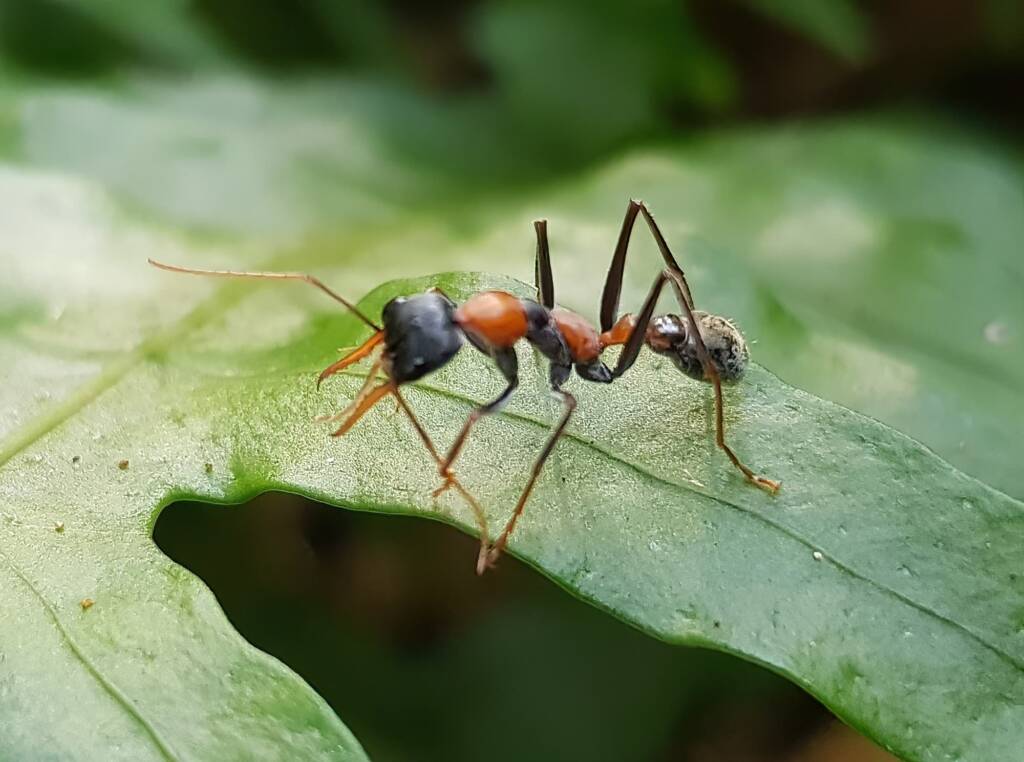
Australia’s ant fauna is large and diverse, and at the time of writing, the number of recognised subfamilies in Australia is 12, which is two-thirds of the world’s subfamilies, and one-third of known genera, and 15% of all described species. It is a fact that some genera are found only in Australia and possibly some neighbouring countries. Queensland is said to have the greatest diversity of ants in the world, with more than 1,400 species identified within its borders.4
In 2007, from the CSIRO Sustainable Ecosystems Tropical Ecosystems Research Centre (Darwin), it was estimated that the entire Australian fauna comprises about 6,500 species, of which only about one-fifth of have been described.5
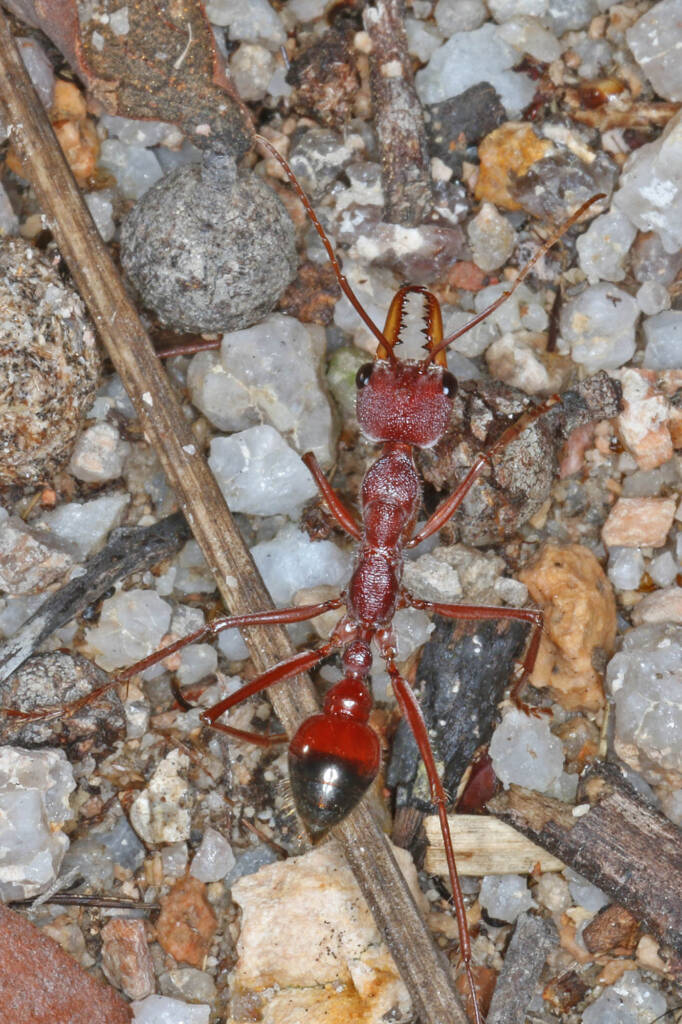
A later published newspaper interview (31 July 2022) with Alan Andersen (a professor, ant expert and ecologist at Charles Darwin University), has the headline ‘Kingdom of the ant’: northern Australia boasts more than 5,000 species, reveals that the true global centre for ants is Australia’s monsoonal north, which stretches from the Kimberley in Western Australia to the Northern Territory’s top end and north Queensland in the east.6

Ants are social insects that exist in colonies, work together to gather food, rear young and defend the nest. Ants can be found just about anywhere, from rainforest to arid desert, urban backyards to inside your homes. Their success is in part, to their ability to communicate with each other, using a complex form of chemical communication. In addition, their success in the environment is attributed to their social organisation, ability to modify habitats, tap resources and to be able to defend themselves.7
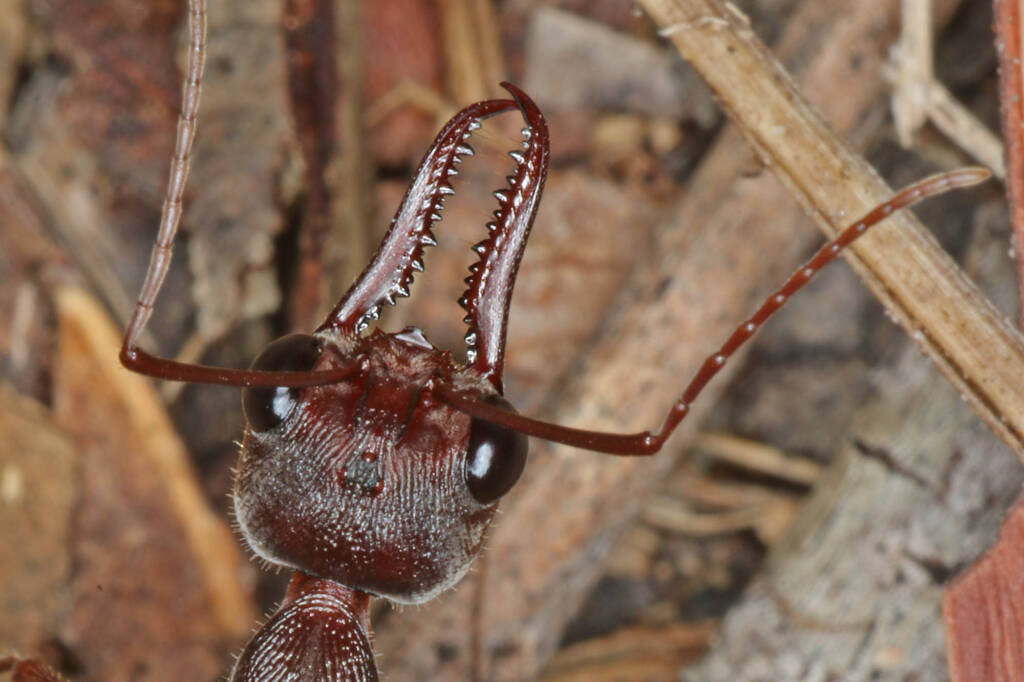
Their long co-evolution with other species has led to mimetic, commensal, parasitic, and mutualistic relationships, that include birds, insects and plants. The relationships with the ants have in some instances evolved to the point where ants are a necessary part of their life cycle. Some birds species have placed ants on their bodies to remove parasites, in a process known as “anting”.8
Most ants are omnivores, which means they eat plants, meat and insects. Some of the common foods eaten by ants include leaves, fungus, nectar (the liquid that plants and flowers produce), fruits, vegetables, sugar, insects and their eggs, lizards, amphibians, and dead carrion.
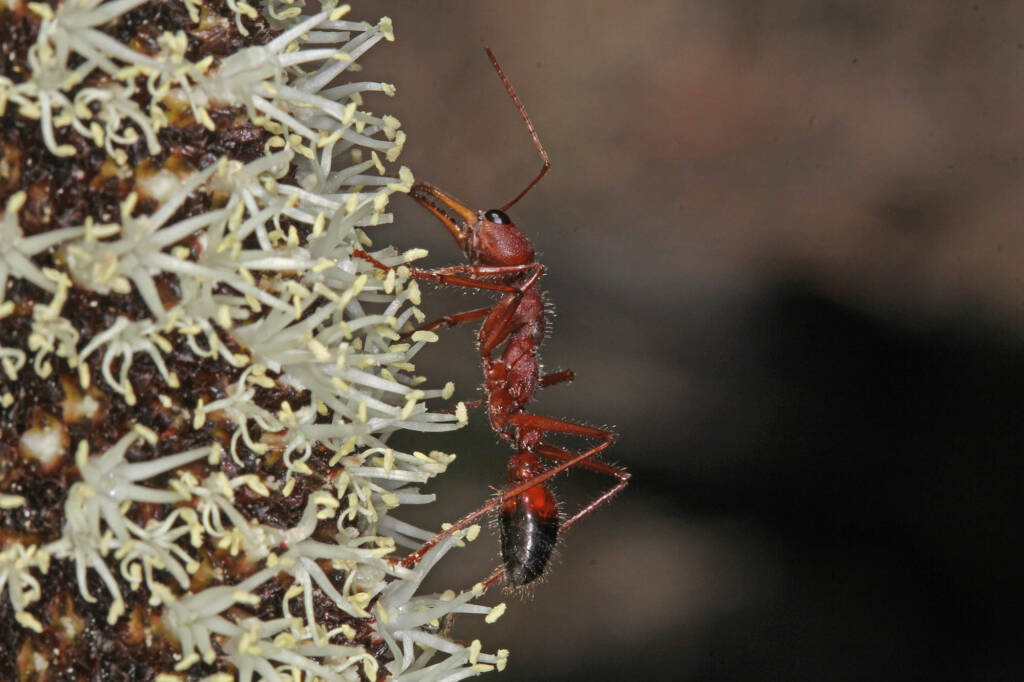
Some ant species have symbiotic relationship with certain insects such as aphids. The aphids are “raised” and cared for like cattle. In exchange the aphids who feed on plant sap produce a sweet sugary substance called honeydew.
In exchange the ants will protect the aphids from danger, whilst harvesting the honeydew that the aphids produce. However, it has been known, that if the aphid attempts to develop wings and fly away, the ants will sometimes rip the wings off to prevent the aphid from flying away.
Ants have also been known to reluctantly share the nectar of flowering plants with other visiting insects such as bees and wasps.
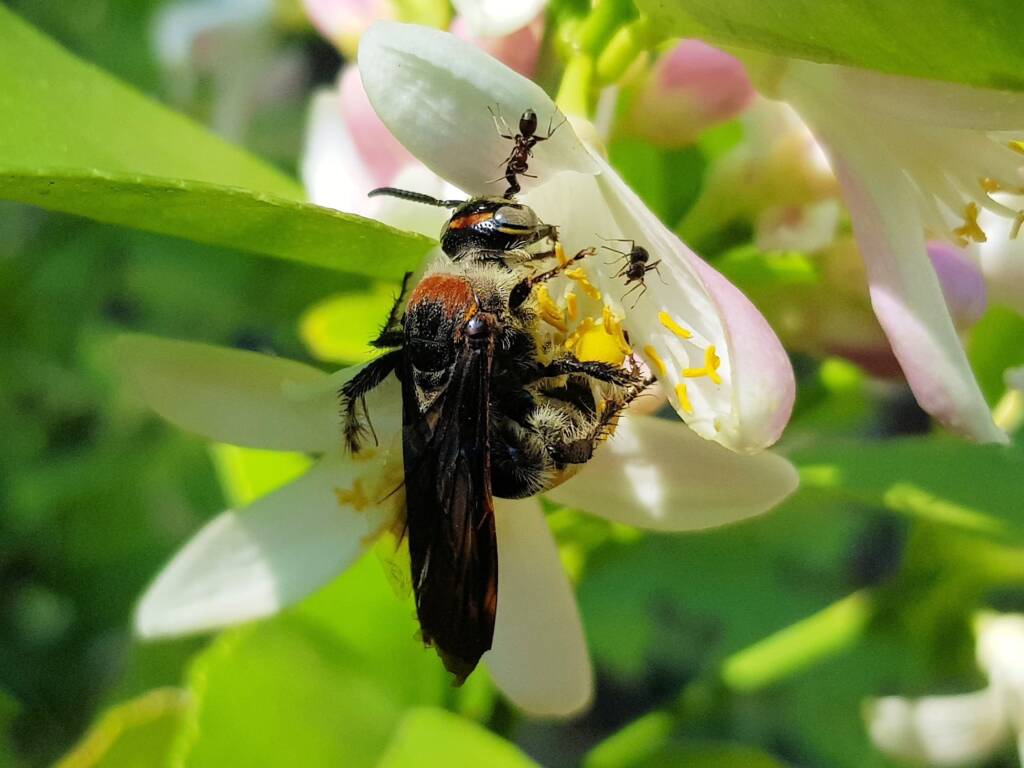
Where do ants live?
Most ants species make their nests in the ground, building very elaborate tunnels and chambers for their food, eggs and young. In many cases, if you see a small mound of earth with an opening at the top (known as an anthill), and ants coming and going, then you would have found the entrance to the nest of that particular species.

Some ant species have distinctive entrance to their nest, such as the Mulga Ant (Polyrhachis macropa) who nests are often found under or near mulga shrubs and trees.

Ant hills and termite mounds are by completely different insects, ants are from the family Formicidae (order Hymenoptera) and termites are from the family Termitidae (order Blattodea).

Ant hills, are usually recognisable as being like a mile of mud. Often they are small (much smaller then the termite mounds).

Termite mounds are usually large, the most famous are those found in the top end of Australia, and known as Cathedral Termite Mounds or Magnetic Termite Mounds.
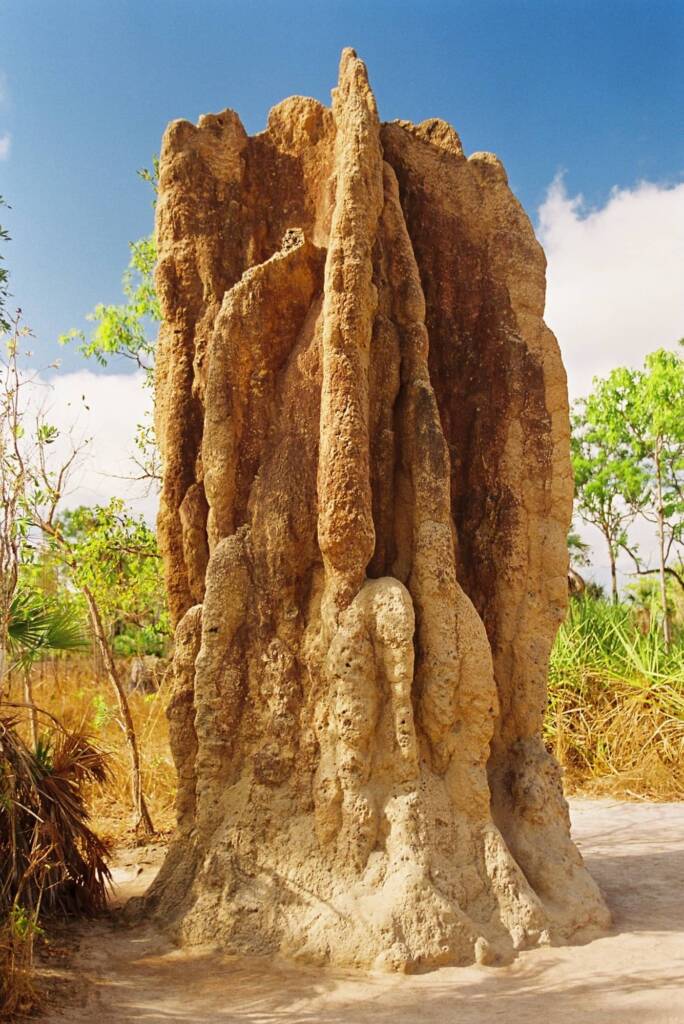
Of course, not all termite mounds are big, the following is a termite mound in Kings Canyon, no more then half a metre high.

When is an ant not an ant?
Insects that mimic the appearance of ants include the family Mutillidae, a group of more than 7,000 species of wasps whose wingless females resemble large, hairy ants.
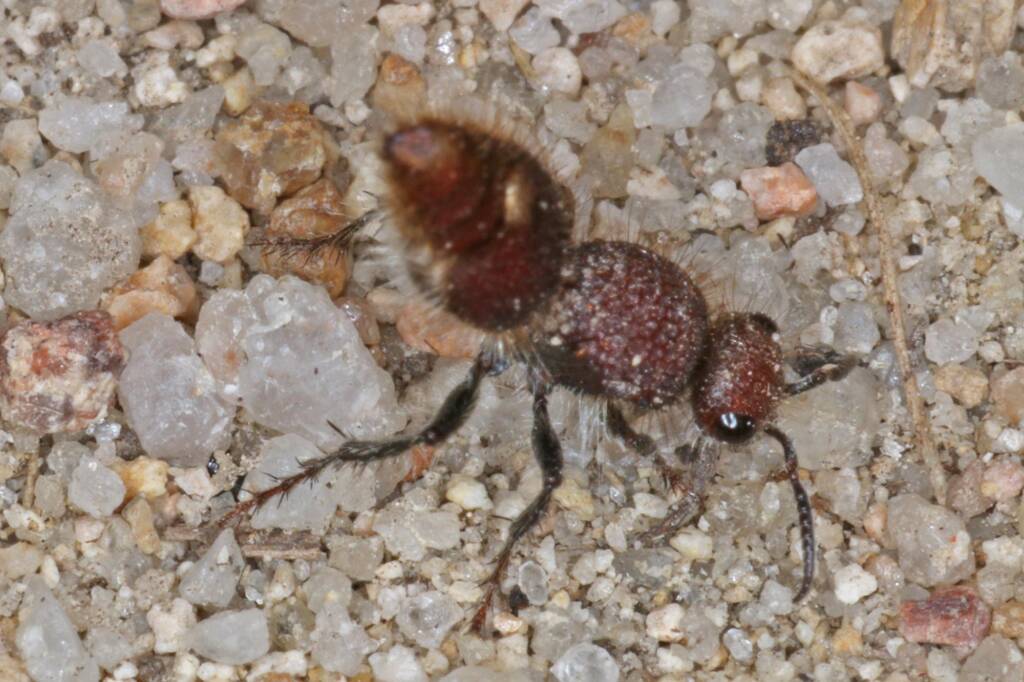

In the following you can see the difference in the scientific classification naming between the species Nasutitermes triodiae and Polyrhachis macropa.
| Scientific classification Kingdom: Animalia Phylum: Arthropoda Subphylum: Hexapoda Class: Insecta Informal: Pterygotes Order: Hymenoptera Superfamily: Vespoidea Family: Formicidae Subfamily: Formicinae Tribe: Camponotini Genus: Polyrhachis Subgenus: infrageneric Campomyrma Species: Polyrhachis macropa | Scientific classification Kingdom: Animalia Phylum: Arthropoda Subphylum: Hexapoda Class: Insecta Informal: Pterygotes Order: Blattodea Superfamily: Blattoidea Informal: Termitoidae Family: Termitidae Genus: Nasutitermes Species: Nasutitermes triodiae |
Bush Tucker Honey Ants
Australia has an ant species that is use as bush food by the local Aboriginal people. Known as Honey Ants or Honeypot Ants, they belong to the species Camponotus inflatus. These ants are important to the Aboriginal people, featuring in some dreaming stories and depicted in their artwork. You can find out more about them in our section on Honey Ants Symbols.
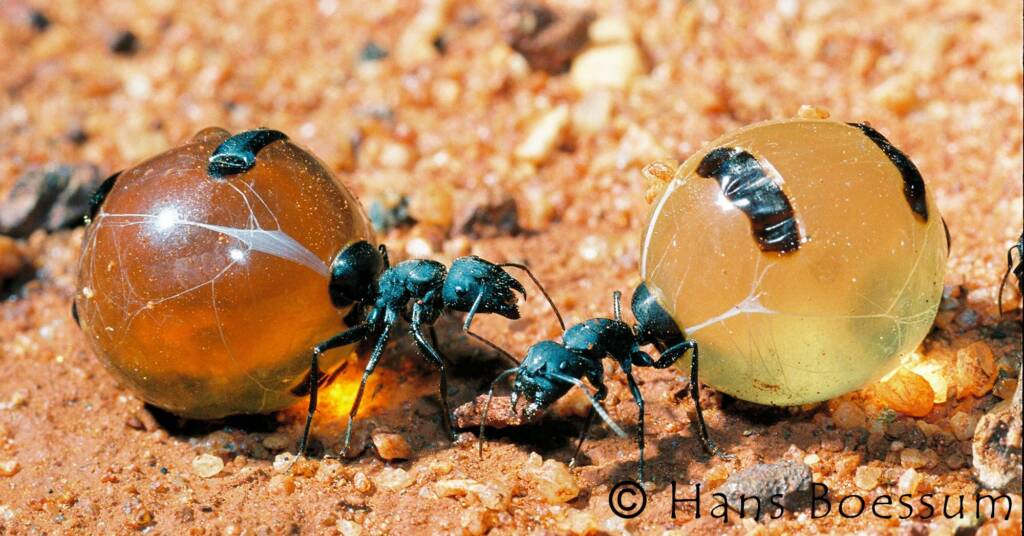
- Scientific classification
- Kingdom: Animalia
- Phylum: Arthropoda
- Subphylum: Hexapoda
- Class: Insecta
- Informal: Pterygotes
- Order: Hymenoptera
- Superfamily: Vespoidea
- Family: Formicidae
- Scientific classification
- Kingdom: Animalia
- Phylum: Arthropoda
- Subphylum: Hexapoda
- Class: Insecta
- Informal: Pterygotes
- Order: Hymenoptera
- Superfamily: Vespoidea
- Family: Formicidae
- Subfamily:
- Amblyoponinae Forel, 1893
- Dolichoderinae Forel, 1878
- Dorylinae Leach, 1815
- Ectatomminae Emery, 1895
- Formicinae Latreille, 1809
- Heteroponerinae Bolton, 2003
- Leptanillinae Emery, 1910
- Myrmeciinae Emery, 1877
- Myrmicinae Lepeletier de Saint-Fargeau, 1835
- Ponerinae Lepeletier de Saint-Fargeau, 1835
- Proceratiinae Emery, 1895
- Pseudomyrmecinae Smith, 1952
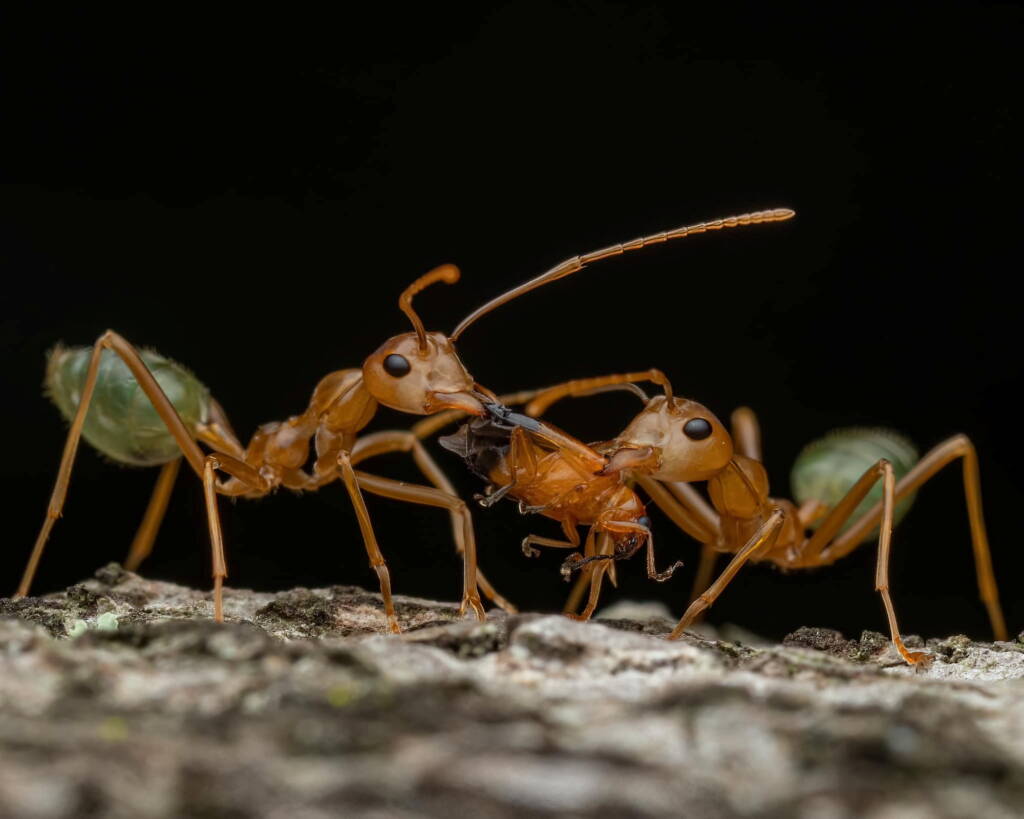
Footnote & References
- Photographs © Callum Munro
- Ants, by Philip S. Ward, Current Biology Vol 16 No 5, R152, Primer, Cell Press, https://www.cell.com/current-biology/pdf/S0960-9822(06)01204-8.pdf
- Non-kin Cooperation in Ants, by Andrew V. Suarez, Michael A. D. Goodisman, Frontiers, https://www.frontiersin.org/articles/10.3389/fevo.2021.736757/full
- Queensland home to most ant species in the world, 8 August 2015, Brisbane Times, https://www.brisbanetimes.com.au/national/queensland/queensland-home-to-most-ant-species-in-the-world-20150808-giumpr.html
- Andersen, A. N. 2007. Ant diversity in arid Australia: a systematic overview, pp. 19-51. In Snelling, R. R., B. L. Fisher, and P. S. Ward (eds). Advances in ant systematics (Hymenoptera: Formicidae): homage to E. O. Wilson – 50 years of contributions. Memoirs of the American Entomological Institute, 80, http://antbase.org/ants/publications/21273/21273.pdf
- ‘Kingdom of the ant’: northern Australia boasts more than 5,000 species, Sunday 31 July 2022, by Graham Readfearn, The Guardian, https://www.theguardian.com/environment/2022/jul/31/kingdom-of-the-ant-northern-australia-boasts-more-than-5000-species
- Ant, Wikipedia, https://en.wikipedia.org/wiki/Ant
- Ants: Family Formicidae, Australian Museum, https://australian.museum/learn/animals/insects/ants-family-formicidae/
- Formicidae Latreille, 1809, Ants, Atlas of Living Australia, https://bie.ala.org.au/species/https://biodiversity.org.au/afd/taxa/2f82ed6f-9f73-448d-a2f6-18398202131b
FormicidaeAnts Camponotus aurocinctus Camponotus consobrinus (Banded Sugar Ant) Camponotus inflatus (Honey Ant) Dolichoderus doriae (Dolly Ant) Leptomyrmex erythrocephalus (Red-headed Spider Ant) Myrmecia brevinoda (Nocturnal Bull Ant) Myrmecia nigrocincta (Jumping Jack Ant) Myrmecia pilosula (Jack Jumper Ant) Myrmecia pyriformis (Inch Ant) Myrmecia rubripes (Bullant) Notoncus spinisquamis Oecophylla smaragdina (Green Tree Ant) Rhytidoponera aspera Rhytidoponera metallica (Green-head Ant)
InsectsBees Beetles Blattodea Butterflies Coleoptera Cicada Crabronidae Diptera Dragonflies & Damselflies Formicidae Hemiptera Heteroptera (True Bugs) Mango Planthopper Moths Orthoptera Orthopteroid Processionary Caterpillar Stink Bugs, Shield Bugs and Allies Syrphidae Wasps Water Scorpion (Laccotrephes tristis) Witchetty Grub
